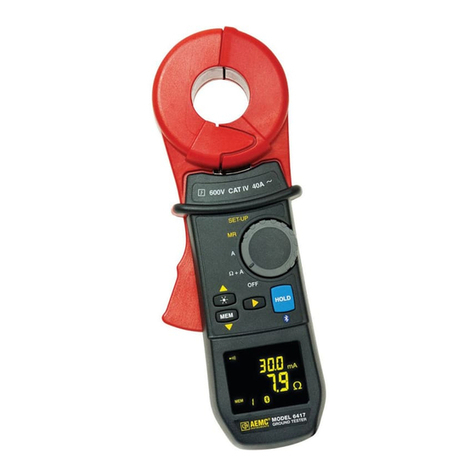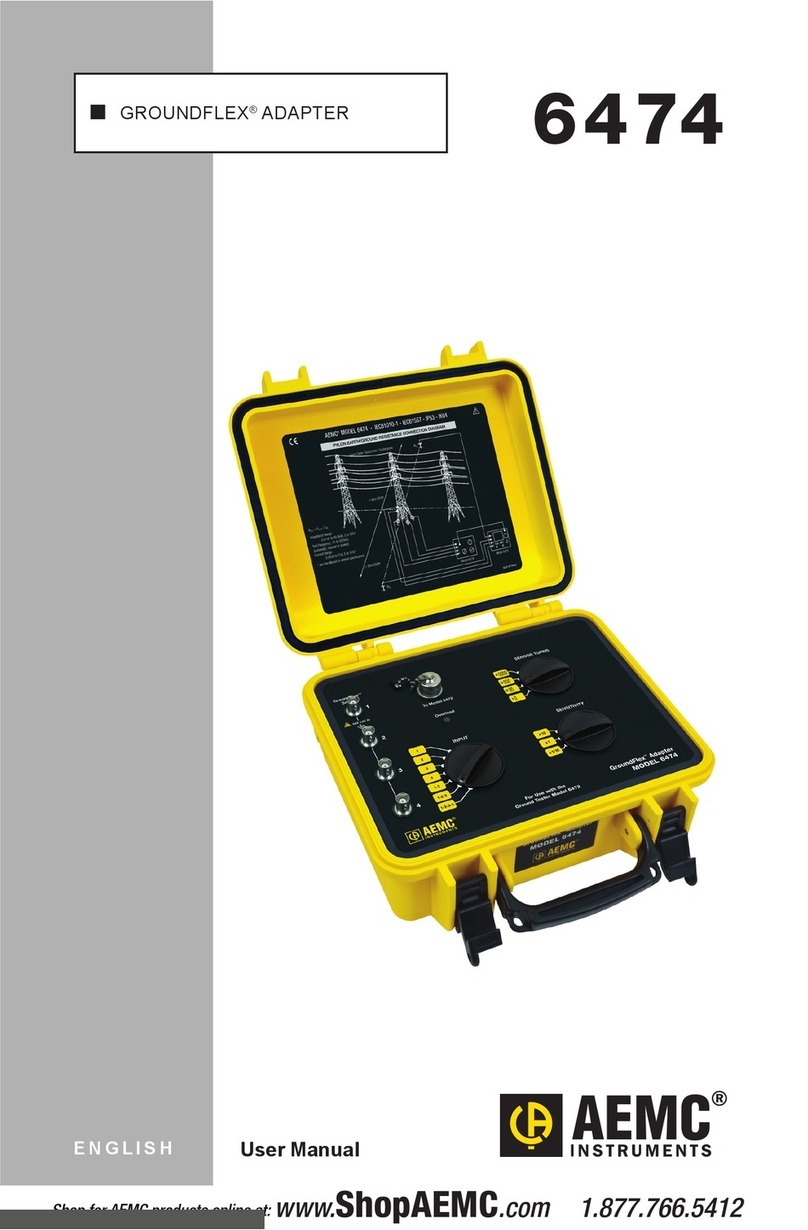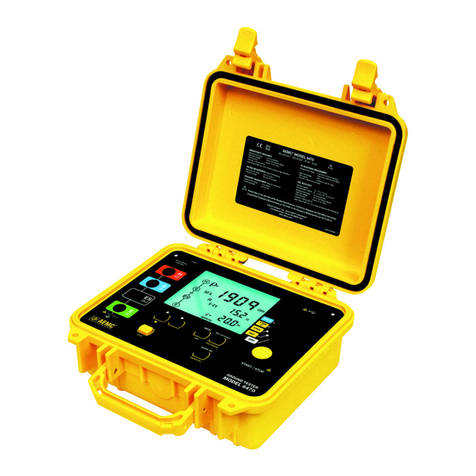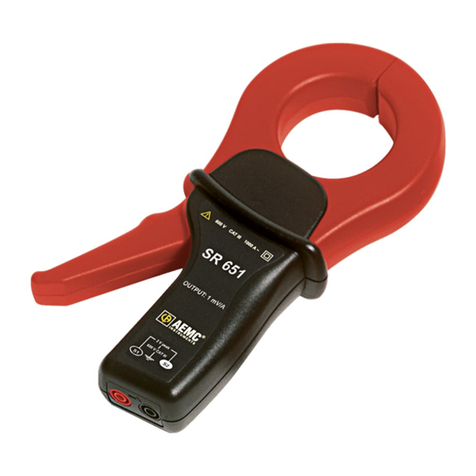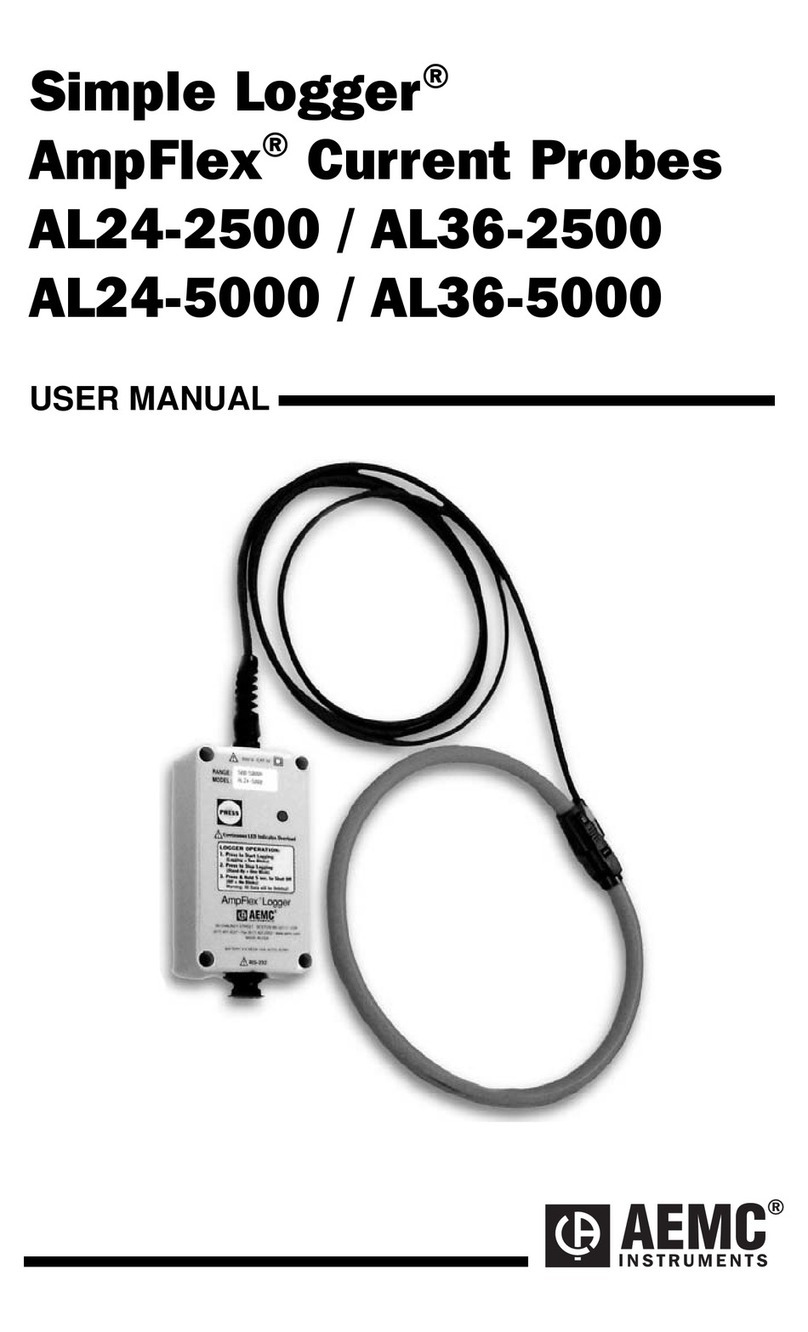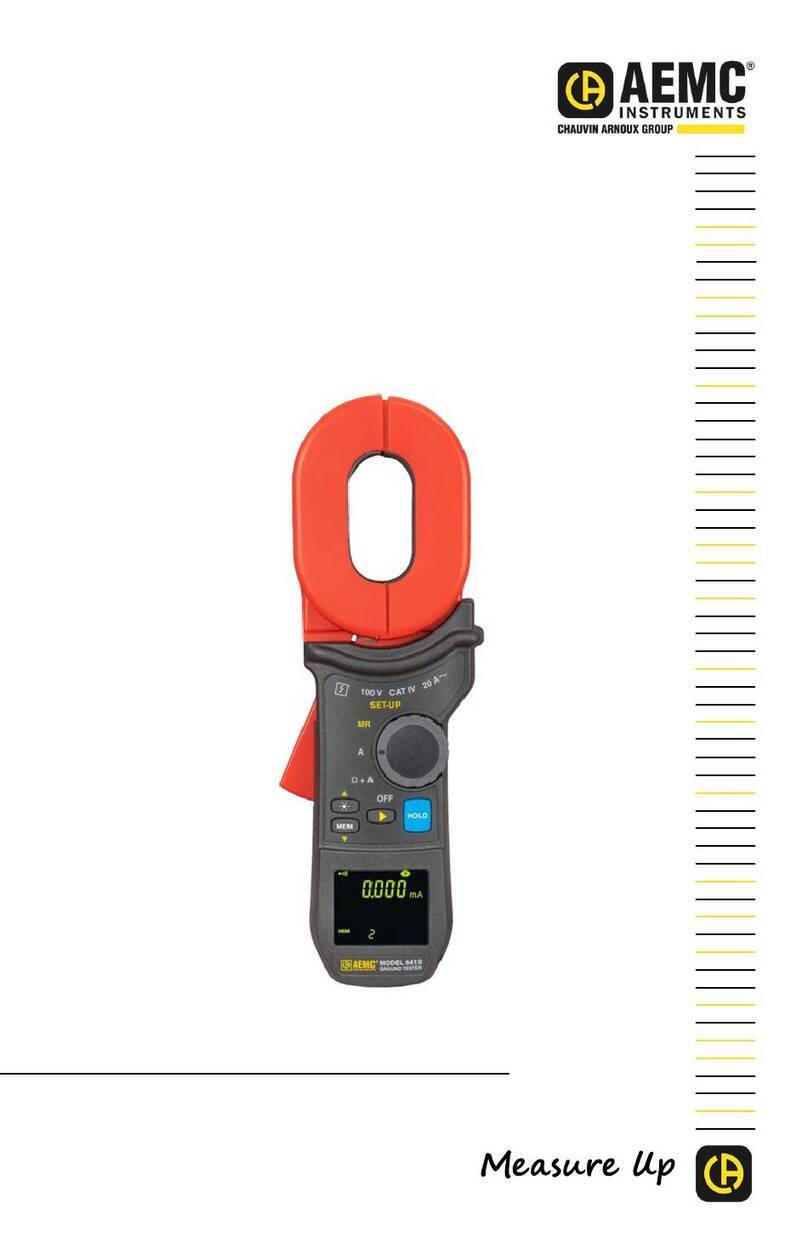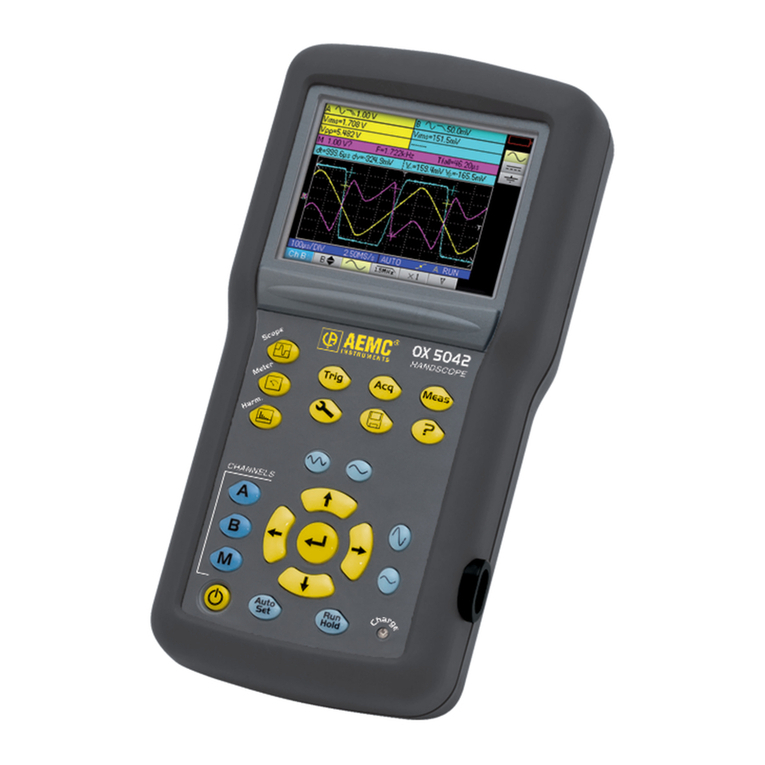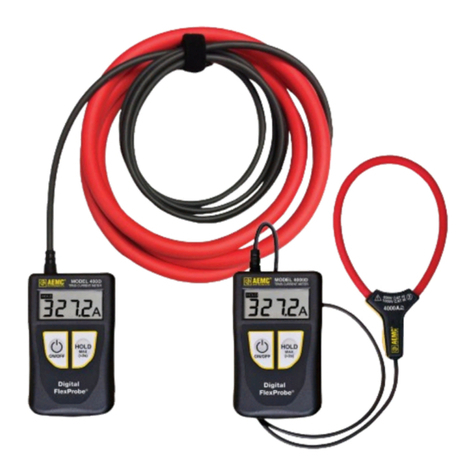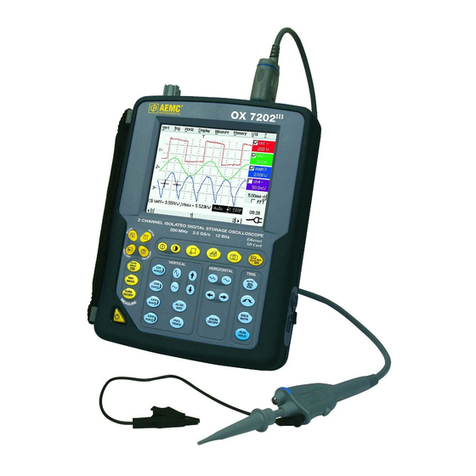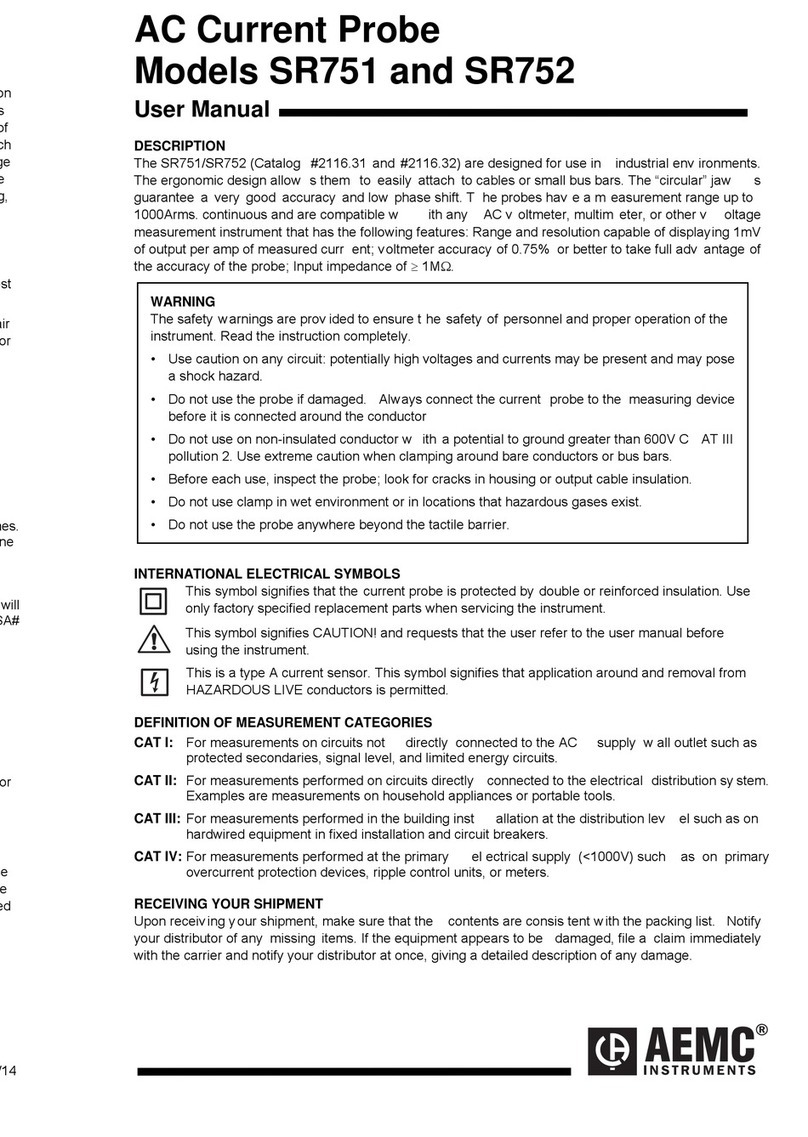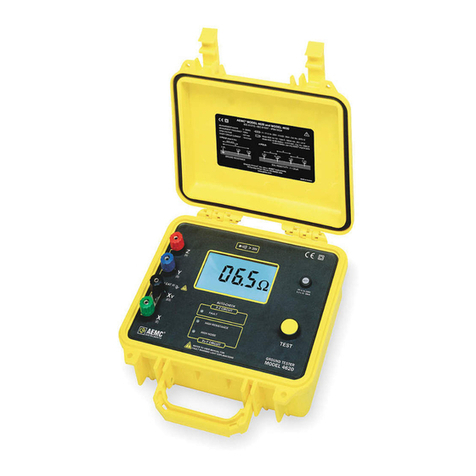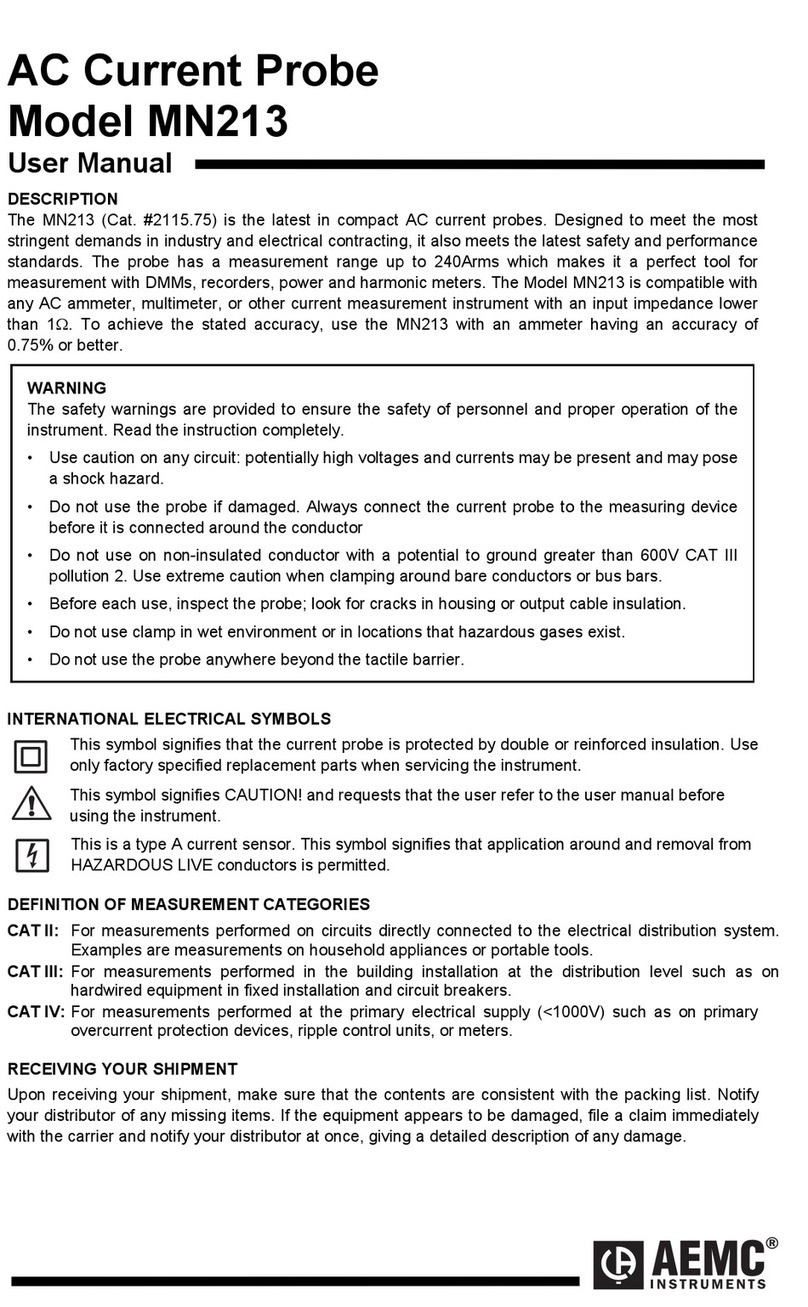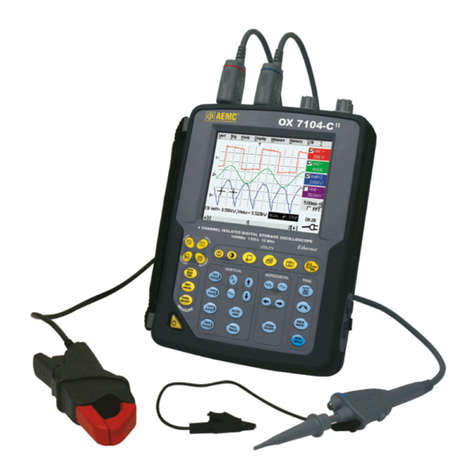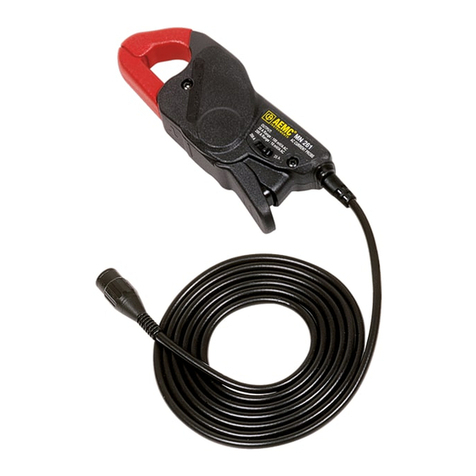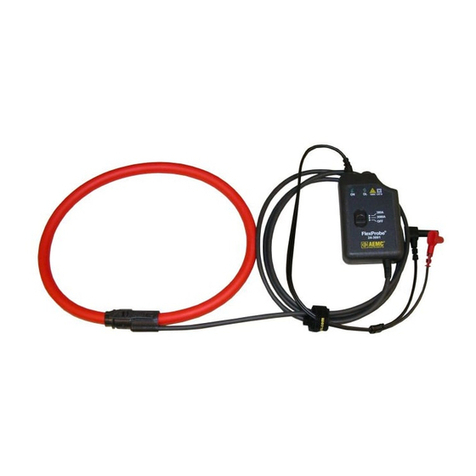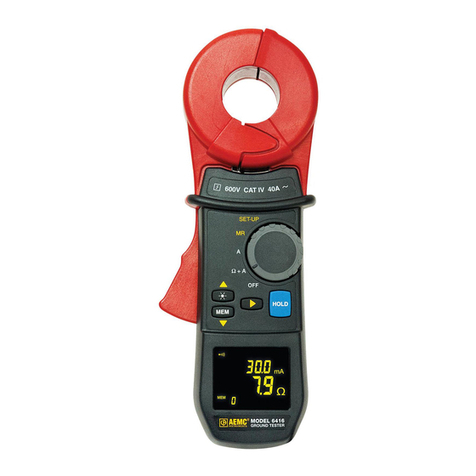
99-MAN 100314.v1 09/06
OPERATION
Making Measurements with the AC Current Probe Model MN122
• Connect the black (S2) and red (S1) terminals to the 200mA range of your DMM or instrument. The
MN122 has a ratio of 1000:1. This means that for 100AAC in the conductor around which the probe is
clamped, 100mAAC will come out of the probe leads to your DMM or instrument. The output is 1mAAC
per Amp. Select the range on your DMM or instrument which best corresponds to the measured
current. If the magnitude is unknown, start with the highest range (200mAAC) then work down until the
appropriate range and resolution is reached. Clamp the probe around the conductor. Take the reading
on the meter and multiply it by 1000 to obtain the measured current (e.g., 59mA reading: 59 x 1000 =
59,000mA or 59A).
• For best accuracy, avoid if possible, the proximity of other conductors which may create noise.
Tips for Making Precise Measurements
• When using a current probe with a meter, it is important to select the range that provides the best
resolution. Failure to do this may result in measurement errors.
• Make sure that probe jaw mating surfaces are free of dust and contamination. Contaminants cause air
gaps between the jaws, increasing the phase shift between primary and secondary. It is very critical for
power measurement.
MAINTENANCE:
Warning
• For maintenance use only original factory replacement parts.
• To avoid electrical shock, do not attempt to perform any servicing unless you are qualified to do so.
• To avoid electrical shock and/or damage to the instrument, do not get water or other foreign agents into
the probe.
Cleaning
To ensure optimum performance, it is important to keep the probe jaw mating surfaces clean at all times.
Failure to do so may result in error in readings. To clean the probe jaws, use very fine sand paper (fine
600) to avoid scratching the jaw, then gently clean with a soft oiled cloth.
REPAIR AND CALIBRATION
You must contact our Service Center for a Customer Service Authorization number (CSA#). This will
ensure that when your instrument arrives, it will be tracked and processed promptly. Please write the CSA#
on the outside of the shipping container. If the instrument is returned for calibration, we need to know if you
want a standard calibration, or a calibration traceable to N.I.S.T. (includes calibration certificate plus
recorded calibration data).
Chauvin Arnoux®, Inc. d.b.a. AEMC®Instruments
15 Faraday Drive •Dover, NH 03820 USA
Tel: (800) 945-2362 (Ext. 360)
(603) 749-6434 (Ext. 360)
Fax: (603) 742-2346 or (603) 749-6309
(Or contact your authorized distributor)
Costs for repair, standard calibration, and calibration traceable to N.I.S.T. are available.
NOTE: All customers must obtain a CSA# before returning any instrument.
TECHNICAL AND SALES ASSISTANCE
If you are experiencing any technical problems, or require any assistance with the proper use or
application of this instrument, please call our technical hotline:
(800) 343-1391 • (508) 698-2115 • Fax (508) 698-2118
Chauvin Arnoux®, Inc. d.b.a. AEMC®Instruments
www.aemc.com
AC Current Probe
Model MN122
User Manual
DESCRIPTION
The MN122 (Catalog #2129.11) is a current probe for tight areas such as crowded wiring. Extends
DMM AC measurements to 150AAC. The Model MN122 offers a 5 ft lead with safety 4mm banana
plug.
WARNING
These safety warnings are provided to ensure the safety of personnel and proper operation of the
instrument.
• Read the instruction manual completely and follow all the safety information before attempting
to use or service this instrument.
• Use caution on any circuit: Potentially high voltages and currents may be present and may
pose a shock hazard.
• Read the Safety Specifications section prior to using the current probe. Never exceed the
maximum voltage ratings given.
• Safety is the responsibility of the operator.
• ALWAYS connect the current probe to the display device before clamping the probe onto the
sample being tested.
• ALWAYS inspect the instrument, probe, probe cable, and output terminals prior to use.
Replace any defective parts immediately.
• NEVER use the current probe on electrical conductors rated above 300V in overvoltage
category III (CAT III). Use only on insulated conductors.
INTERNATIONAL ELECTRICAL SYMBOLS
This symbol signifies that the current probe is protected by double or reinforced insulation. Use
only factory specified replacement parts when servicing the instrument.
This symbol signifies CAUTION! and requests that the user refer to the user manual before
using the instrument.
This is a type B current sensor. Do not apply around or remove from HAZARDOUS LIVE
conductors without additional protective means (de-energizing the circuit or wearing protective
clothing suitable for high voltage work).
In conformity with WEEE 2002/96/EC
RECEIVING YOUR SHIPMENT
Upon receiving your shipment, make sure that the contents are consistent with the packing list. Notify
your distributor of any missing items. If the equipment appears to be damaged, file a claim immediately
with the carrier and notify your distributor at once, giving a detailed description of any damage.
PACKAGING
The AC Current Probe MN122 is shipped with this instruction manual and a product warranty and
registration card.
INSTRUMENT COMPATIBILITY
The Model MN122 is compatible with any ammeter, multimeter, or other current measuring instruments
with an input impedance of less than 5Ω. To achieve the stated accuracy, use the MN122 with a meter
having an accuracy of 0.75% or better. The accuracy of the meter must be added to the probe
accuracy.

